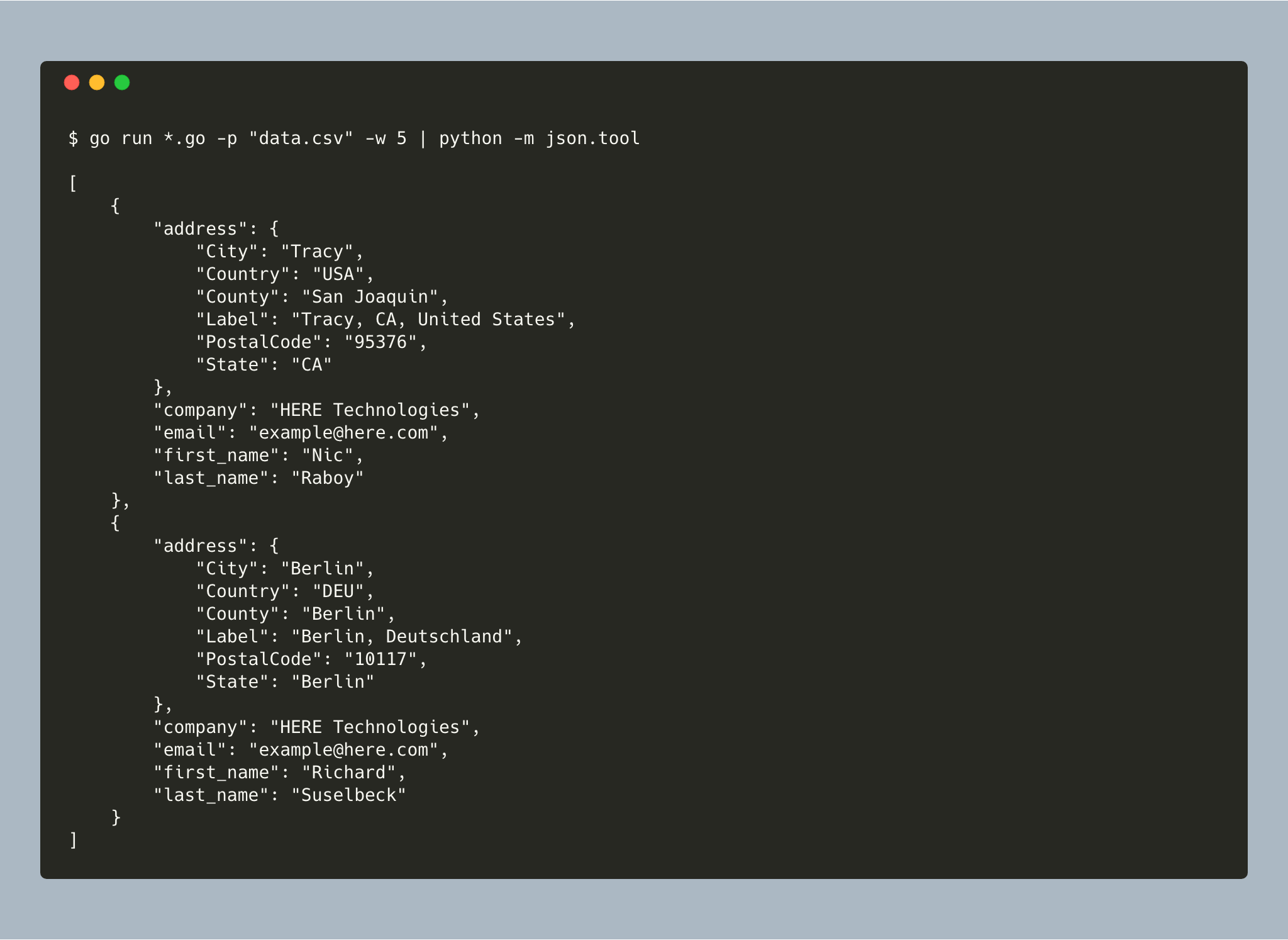There are many kinds of csv files; Web the csv are a type of file with a simple format to represent data as a table, where the columns are separated by commas and the rows by a new line. Command line flags, environment variables, read with the fmt or bufio package, etc. Package main import ( encoding/csv fmt log os ) func readcsvfile. A csv file contains zero or more records of one or more fields per record.
We’ll be using packages from golang’s standard library. Web 1 answer sorted by: This method takes a string (path of the file) and returns a file descriptor. Each record is separated by the newline character. This package supports the format described in rfc 4180.
Web golang offers a vast inbuilt library that can be used to perform read and write operations on files. Web 1 answer sorted by: This method returns either the os.file pointer or an error. The final record may optionally be followed by a newline character. Now, we will try reading a csv file.
This package supports the format 7. In this case, we are going to use os.open () which takes a string (path of the file) and returns a file. Web the csv are a type of file with a simple format to represent data as a table, where the columns are separated by commas and the rows by a new line. Web there are many ways to get user input: 11 package csv import encoding/csv func newreader func newreader (r io.reader) *reader newreader returns a new reader that reads from r. Type employee struct { id string `csv:id` name string `csv:name` age int `csv:age` birthday time.time `csv:birthday` height float32 `csv:height` } Here is the code on how to read a csv file in go. Go now has a csv package for this. A csv file contains zero or more records of one or more fields per record. Each record is separated by the newline character. Web reading a csv file in golang. There are many kinds of csv files; Web complete code to read data from the csv file in golang package main import (encoding/csv fmt os) func main() {file, err := os.open(testcsv.csv) if err != nil {fmt.println(err)} reader := csv.newreader(file) records, _ := reader.readall() fmt.println(records)} Web how to read large csv files ask question asked 5 years, 7 months ago modified 5 years, 7 months ago viewed 2k times 0 what is the best way to read large csv files, at the moment i am reading one record at a time rather than using readall (). Here is a helper method i created to read a csv file and returns its records.
The Final Record May Optionally Be Followed By A Newline Character.
First of all, let’s create an employee struct as follows: Csv.reader.readall () to read and parse the entire file at once. Web 2 photo by mika baumeister on unsplash in this tutorial, we will look at a simple way to read and write csv files in golang. Each record is separated by the newline character.
Web 1 Answer Sorted By:
Web the go code below reads in a 10,000 record csv (of timestamp times and float values), runs some operations on the data, and then writes the original values to another csv along with an additional column for score. Open the file different ways of opening/reading files are explained in gobyexample. There are many kinds of csv files; 11 package csv import encoding/csv func newreader func newreader (r io.reader) *reader newreader returns a new reader that reads from r.
This Package Supports The Format Described In Rfc 4180.
A csv file contains zero or more records of one or more fields per record. To read a csv file, the following methods are used in golang: Go now has a csv package for this. There are a couple of good examples in the docs.
So Say You Have This Csv File.
Web reading a csv file in golang. Web the csv are a type of file with a simple format to represent data as a table, where the columns are separated by commas and the rows by a new line. Web there are many ways to get user input: A csv file contains zero or more records of one or more fields per record.

![[Golang] CSV read and write YouTube](https://i2.wp.com/i.ytimg.com/vi/h6N1ArwiwOk/maxresdefault.jpg)







